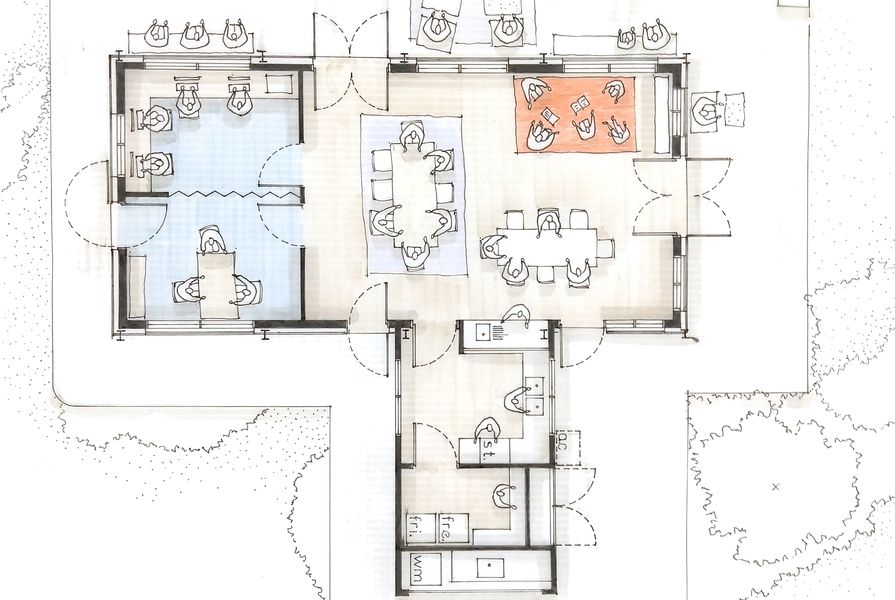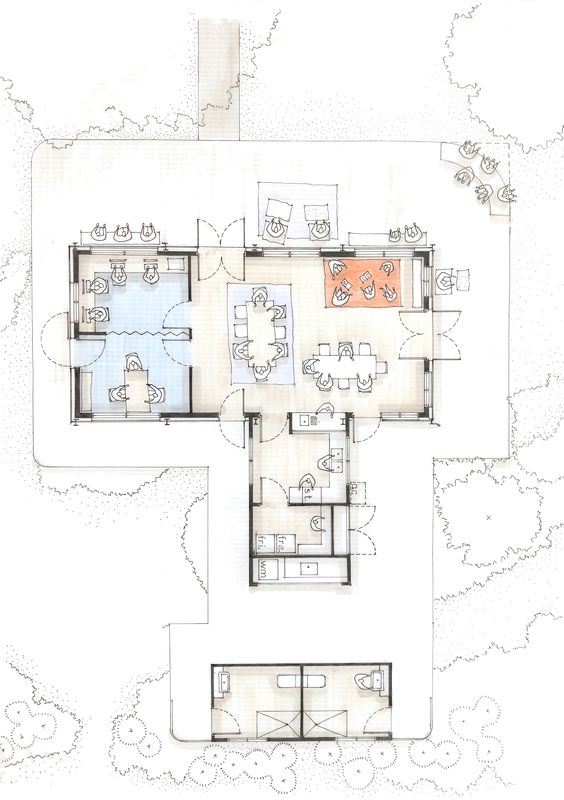Jury citation
A collaborative design, this community centre restoration in Alice Springs seeks to meet the needs of Indigenous residents and children. The project is recognized for its social purpose and intended social impact. By necessity, Indigenous communities without available funds to build facilities access ad hoc social design programs offered by university architectural studios. This hobbled-together approach exposes the precarious nature of infrastructure development for First Nations communities and shames our high-income nation. Anthepe Community Centre is a pragmatic, fit-for-purpose design. To realize such projects, we need advocacy and action.
An unrelated, shortlisted entry to the 2021 AA Prize for Unbuilt Work, by Landscapology, proposed a solution worth mentioning here: an architect’s annual “sorry” tax. While the word “tax” evokes heated reaction in uncertain times, the cost of the “sorry” tax – equivalent to 20 coffees – aims to benefit First Nations peoples. Could such a tax fund projects like Anthepe Community Centre? Twenty-first-century First Nations infrastructure needs must start by mapping aspirations and seeking innovative solutions. While not all problems require architectural solutions, we need to shift this project and others like it from off the radar to reality.
Anthepe Community Centre by University of Newcastle and Tangentyere Council Aboriginal Corporation.
Image: University of Newcastle and Tangentyere Council Aboriginal Corporation
Architect’s description
This project began in mid-2019 as part of a design studio run by an architecture school in partnership with a First Nations agency in Alice Springs. Over a two-week period, this partnership worked with the community of Anthepe to discuss the existing public amenity within the Town Camp. Using mapping and models as a shared form of knowledge, priorities for future projects were developed and further discussed, ultimately giving a shape to the decisions made. Generations of inadequate funding for the Town Camps has meant that residents have come to expect less in term of public infrastructure than Australians living in other towns and cities. The fact that projects remain unbuilt is a recognition of the historic injustices that continue to this day.
Anthepe, also known as “Drive In,” means “Women’s Dancing” in Arrernte. The Town Camp, located on Arrernte Country, south of the centre of Alice Springs, has a permanent population of more than 100 people living in 15 houses.
The existing community facility was built in the 1980s, upgraded in 1991 and variously used over the years as a community centre, a church, a clinic and even as housing. In the early 2000s, the facility was vacated when the building became structurally unsafe. Too often in First Nations communities, a lack of funding and maintenance leaves facilities and infrastructure neglected, fuelling a recurring pattern of vacancy and consequent vandalism.
The Anthepe community identified the need for the existing building to be renovated as a community centre as its highest priority. Reducing the impact of overcrowding within Town Camp houses and providing a safe environment for kids to play were also of high importance. Through a series of collective discussions with the community, the individual spatial needs of the groups of women, men and children that would use the community centre were identified within the proposed design.
Central to the design strategy was for it to provide an efficient, sustainable and economical proposal for the renovation of the community centre. This was achieved by utilizing assets of the existing structure and incorporating a series of critical and essential interventions into both the building and the site to ensure that it met the needs and vision of the community – to provide a safe and secure community facility with increased thermal comfort, helping to improve health and nutrition whilst facilitating education, professional development, connectivity and creativity. A comprehensive and detailed government funding submission was made in 2019; the application was unsuccessful.
Source

Award
Published online: 14 Jan 2021
Words:
ArchitectureAU Editorial
Images:
University of Newcastle and Tangentyere Council Aboriginal Corporation
Issue
Architecture Australia, January 2021




















